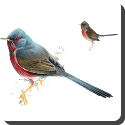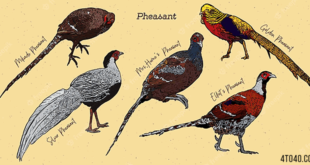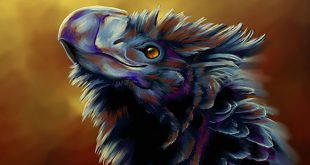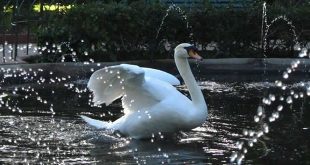 Warbler — There are a number of passerine birds, order Passeriformes, which are called warblers. They are not particularly closely related, but share some characteristics, such as being fairly small, active and insectivorous.They are mostly brownish or dull greenish in color, of small size, easier seen than heard, and harder to determine to species.
Warbler — There are a number of passerine birds, order Passeriformes, which are called warblers. They are not particularly closely related, but share some characteristics, such as being fairly small, active and insectivorous.They are mostly brownish or dull greenish in color, of small size, easier seen than heard, and harder to determine to species.
The Old World warblers are more than 300 species of birds constituting the subfamily Sylviinae of the flycatchers. They are generally grayish, greenish, or brownish, but some African species are highly colorful. Only three members of this subfamily occur regularly in the New World: the ruby-crowned kinglet, Regulus calendula; the golden-crowned kinglet, Regulus satrapa; and the Arctic warbler, Phylloscopus borealis. Among the most ancient of songbirds, the subfamily Sylviinae is regarded by many authorities as a separate family, Sylviidae.
The New World warblers or wood-warblers are a group of small often colourful passerine birds restricted to the New World. They are not related to the Old World warblers (Sylviidae) or the Australian warblers.
Most are arboreal, but some, like the Ovenbird and the two waterthrushes, are more terrestrial. Most members of this family are insectivores.
It is likely that this group originated in northern Central America, which remains with the greatest diversity and numbers of species. From thence they spread north during the interglacial periods, mainly as migrants, returning to the ancestral region in winter. Two genera, Myioborus and Basileuterus seem to have colonised South America early, perhaps before the two continents were linked, and provide most of the resident warbler species of that region.
Many migratory species, particularly those breeding further north, have distinctive male plumage at least in the breeding seaon, since males need to reclaim territory and advertise for mates each year. This tendency is particularly marked in the large genus Dendroica. In contrast, resident tropical species, which pair for life, show little if any sexual dimorphism.
There are of course exceptions. The Seiurus waterthrushes and Ovenbird are strongly migratory, but have identical male and female plumage, whereas the mainly tropical and sedentary yellowthroats are dimorphic.
The Granatellus chats also show sexual dimorphism, but due to recent genetic work may soon be moved into the family Cardinalidae (New World buntings and cardinals).
All the warblers are fairly small. The smallest species is the Lucy’s Warbler (Vermivora luciae), at about 6.5 grams and 10.6 cm (4.2 inches). By far the largest species is the Yellow-breasted Chat (Icteria virens), at 27 grams and 19 cm (7.5 inches).
The migratory species tend to lay larger clutches of eggs, typically up to six, since the hazards of their journeys mean that many individuals will have only one chance to breed. In contrast, two eggs is typical for many tropical species, since the chicks can be provided with better care, and the adults are likely to have further opportunities for reproduction.
The scientific name for the family, Parulidae, originates from the fact that Linnaeus in 1758 named the Northern Parula as a tit, Parus americanus, and, as taxonomy developed, the genus name was modified first to Parulus and then the current Parula. The family name, of course, derives from that genus.
 Kids Portal For Parents India Kids Network
Kids Portal For Parents India Kids Network




